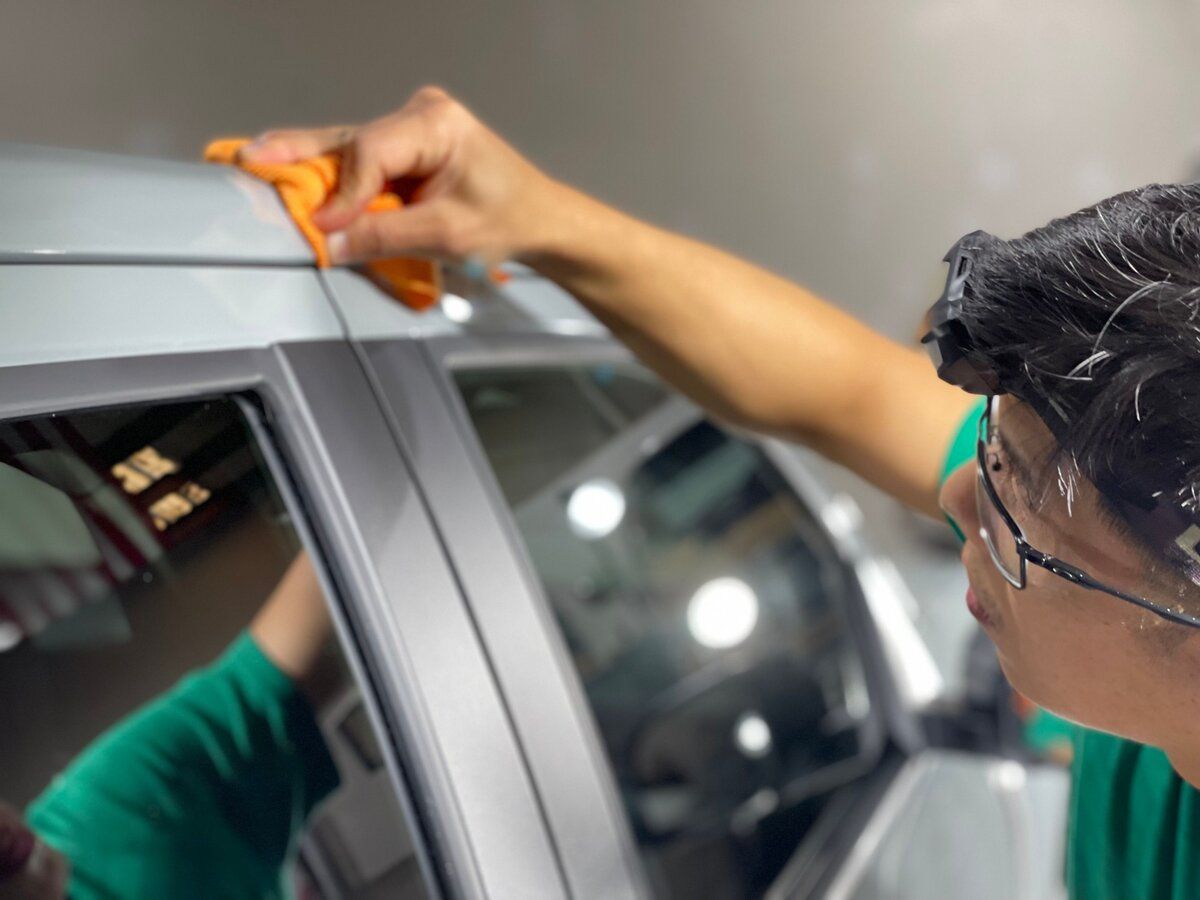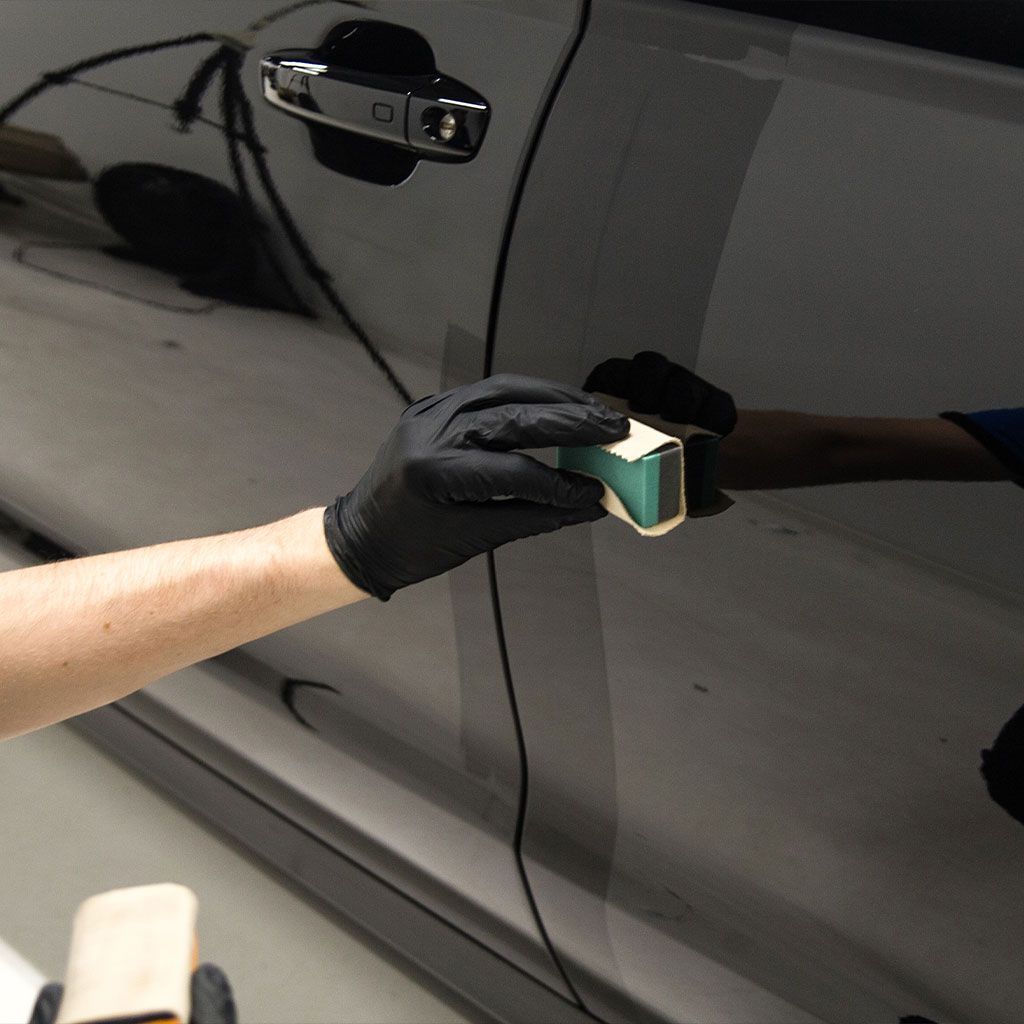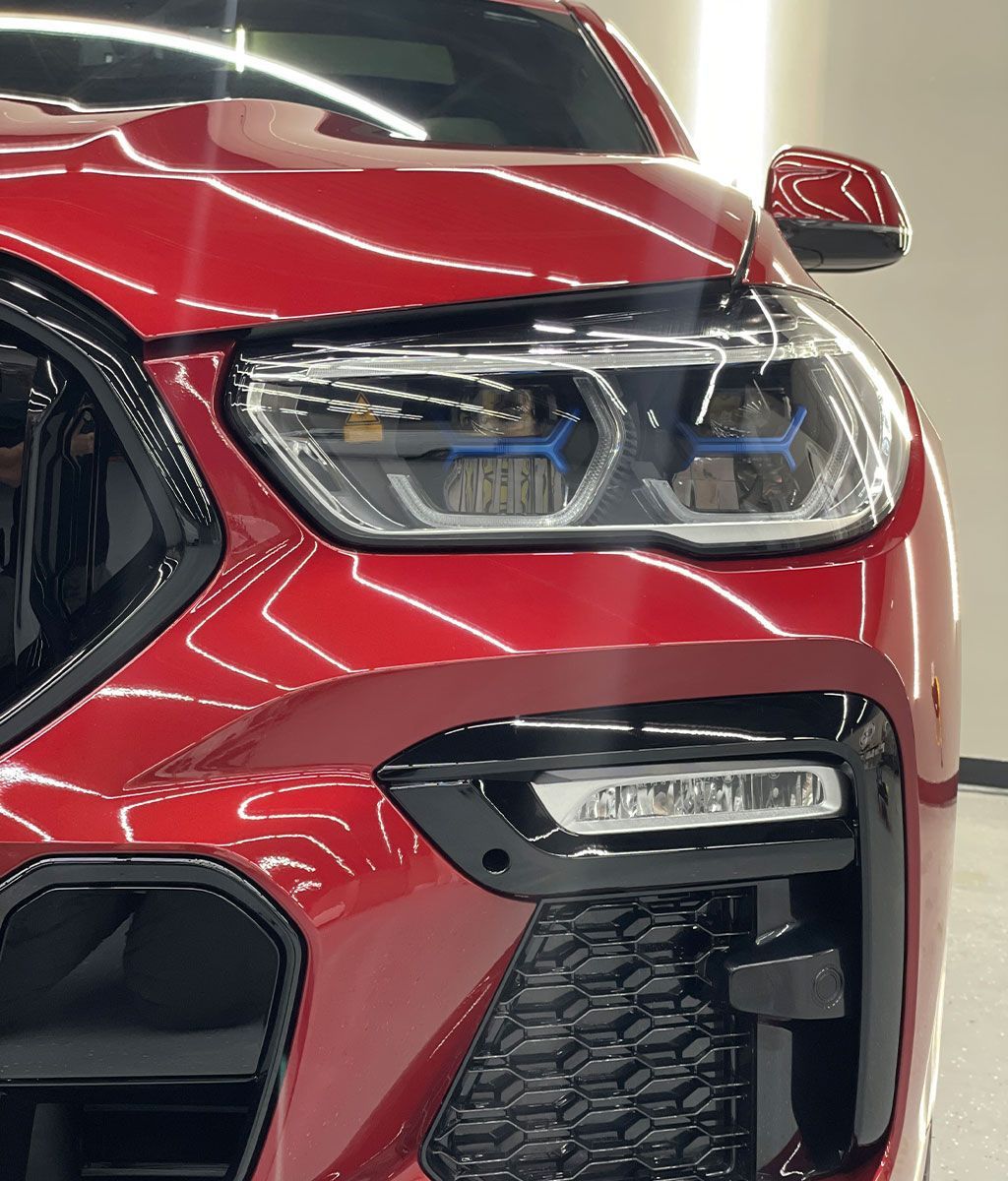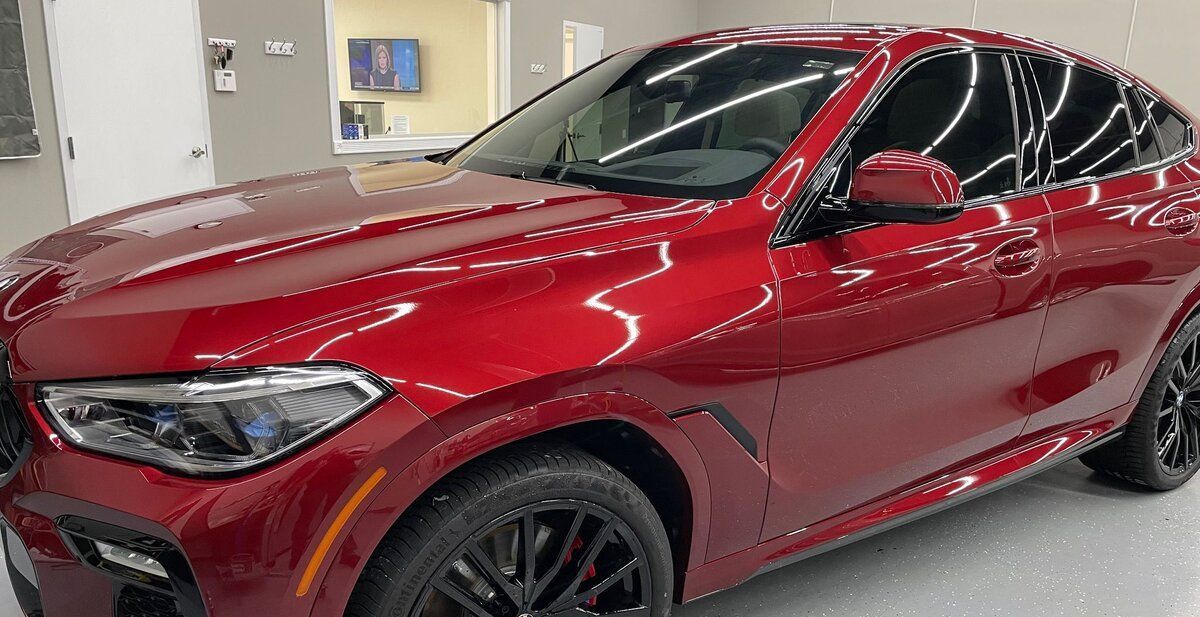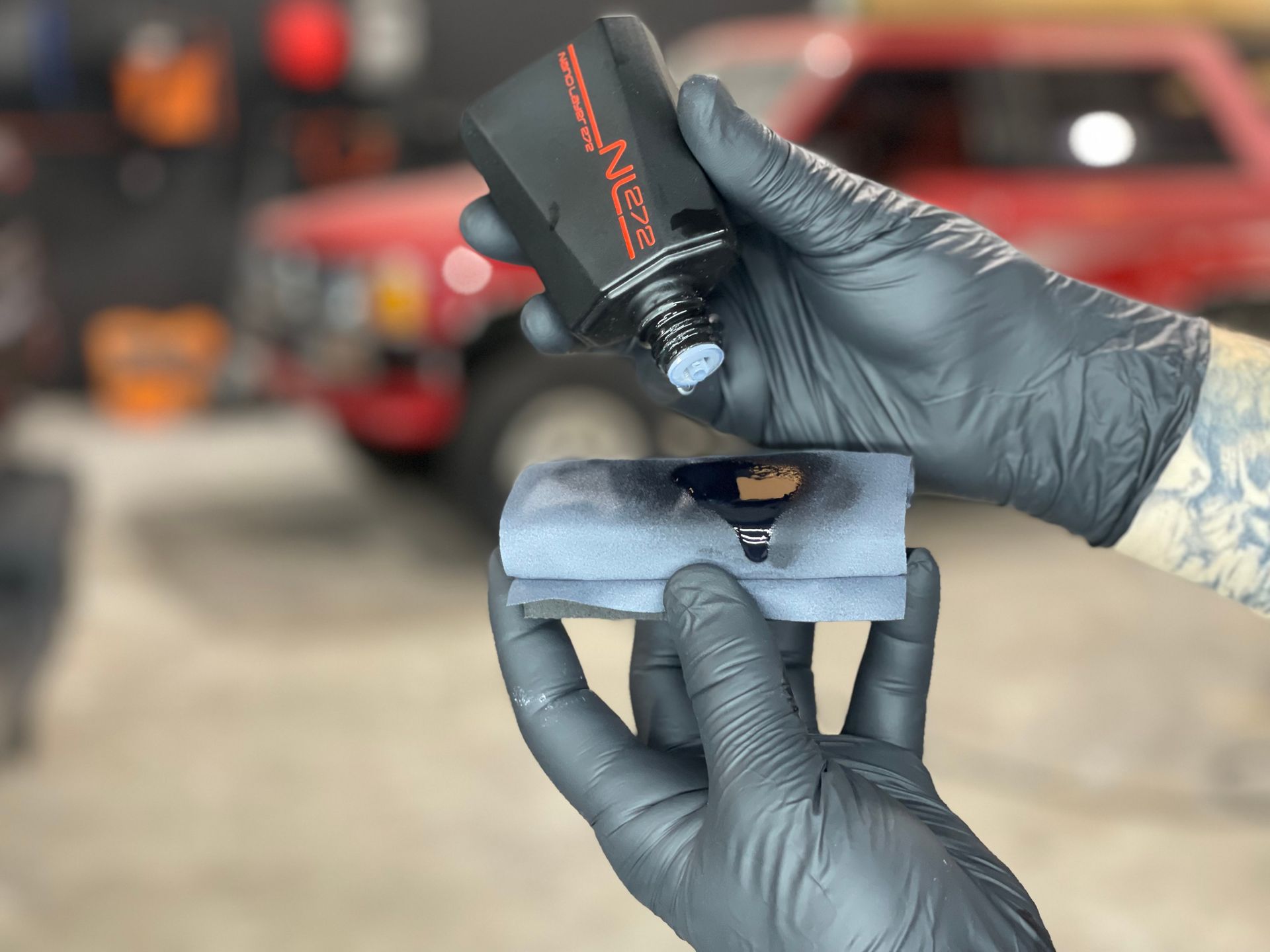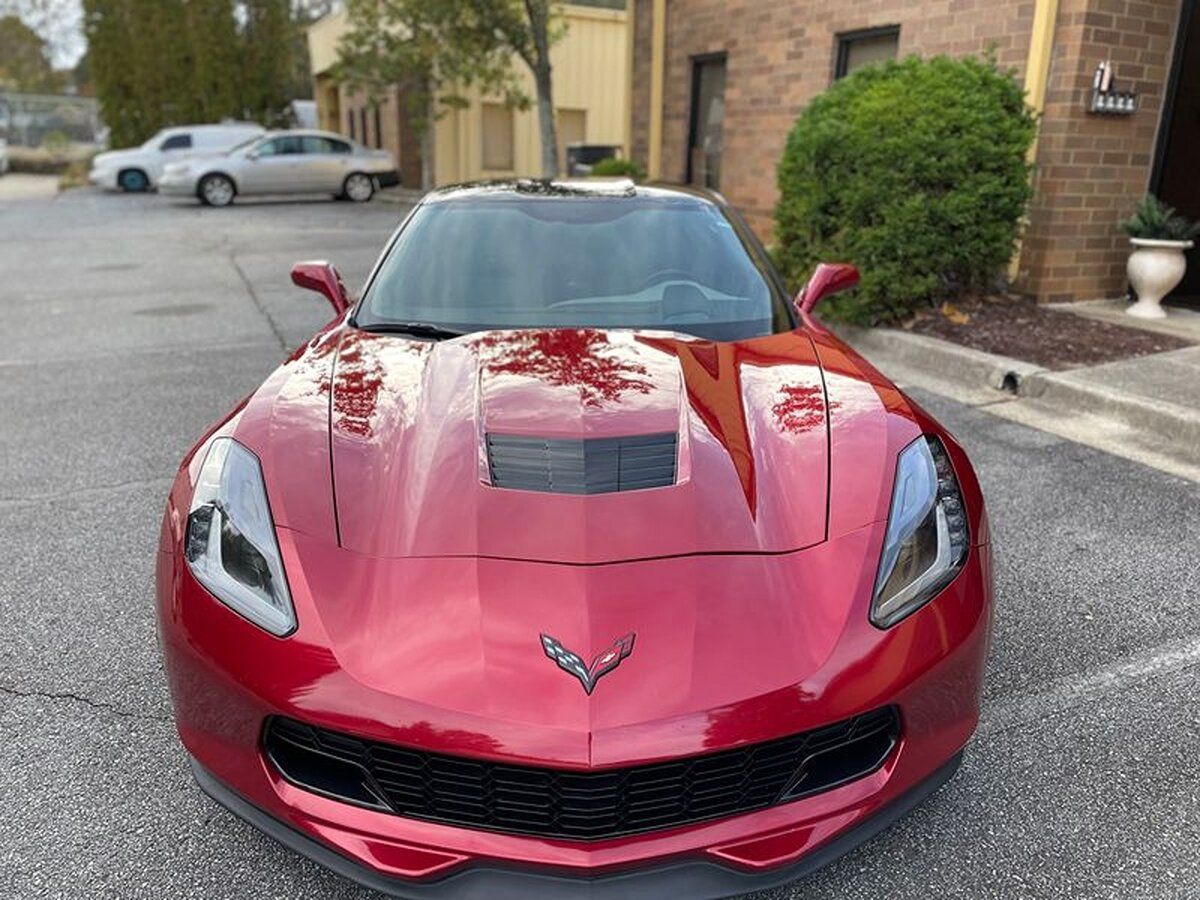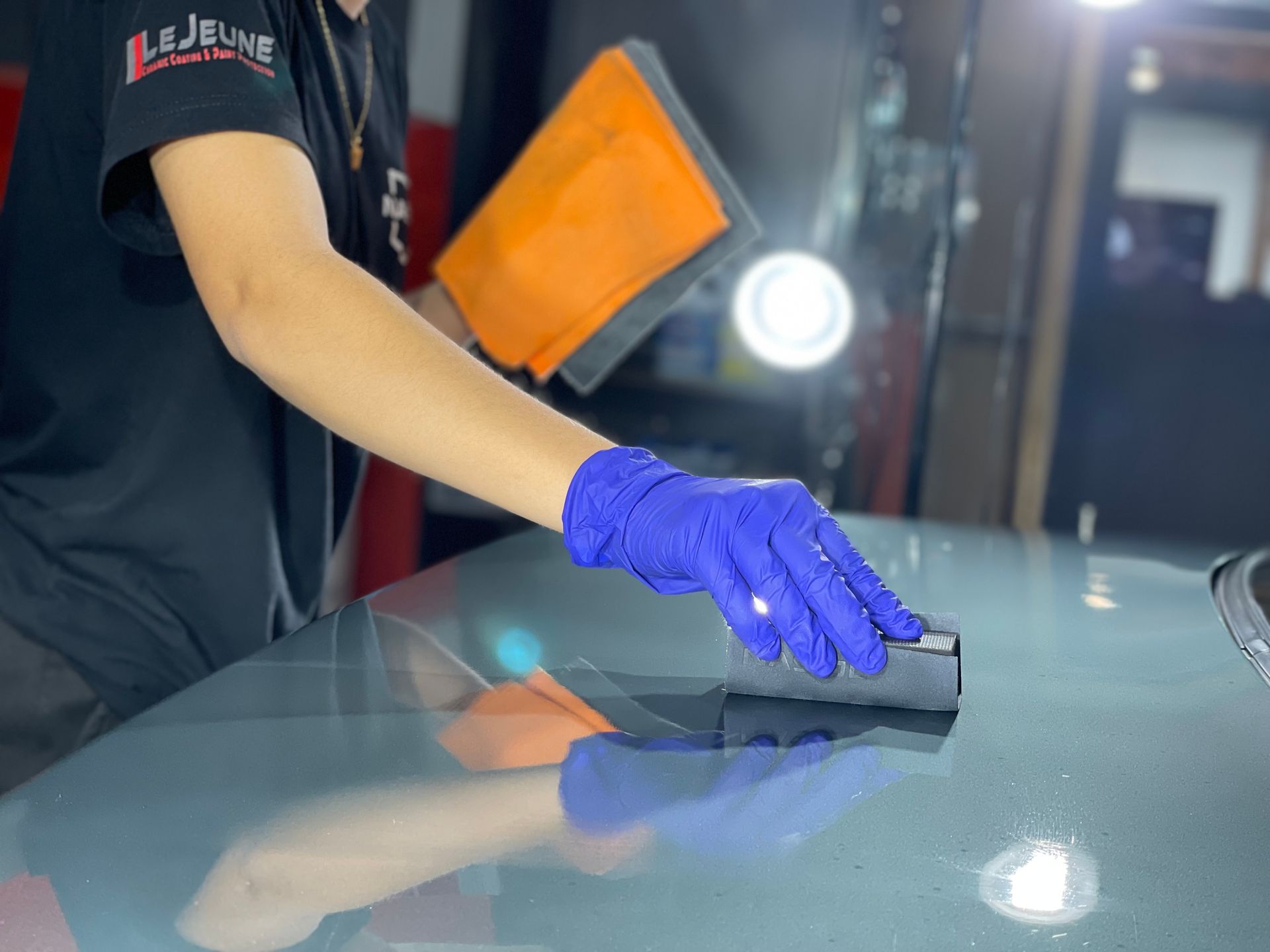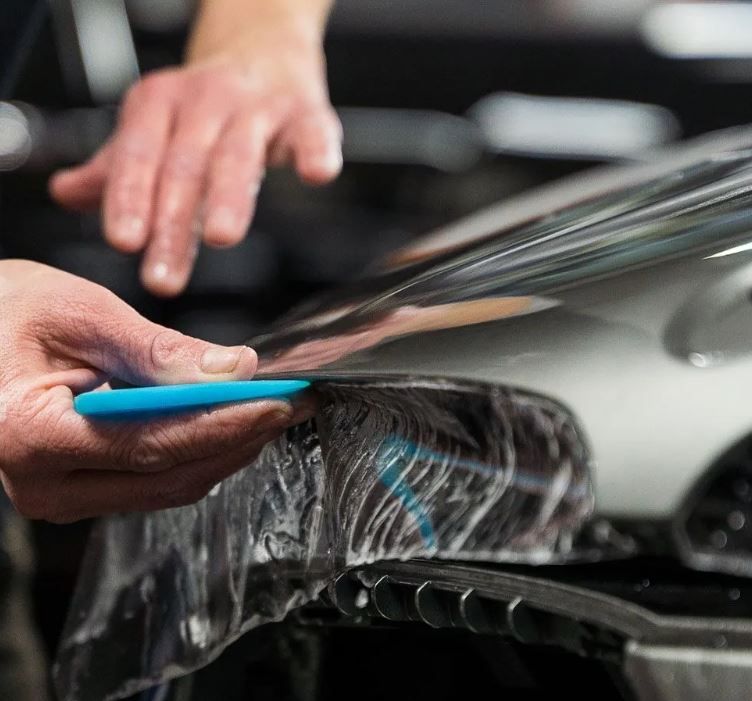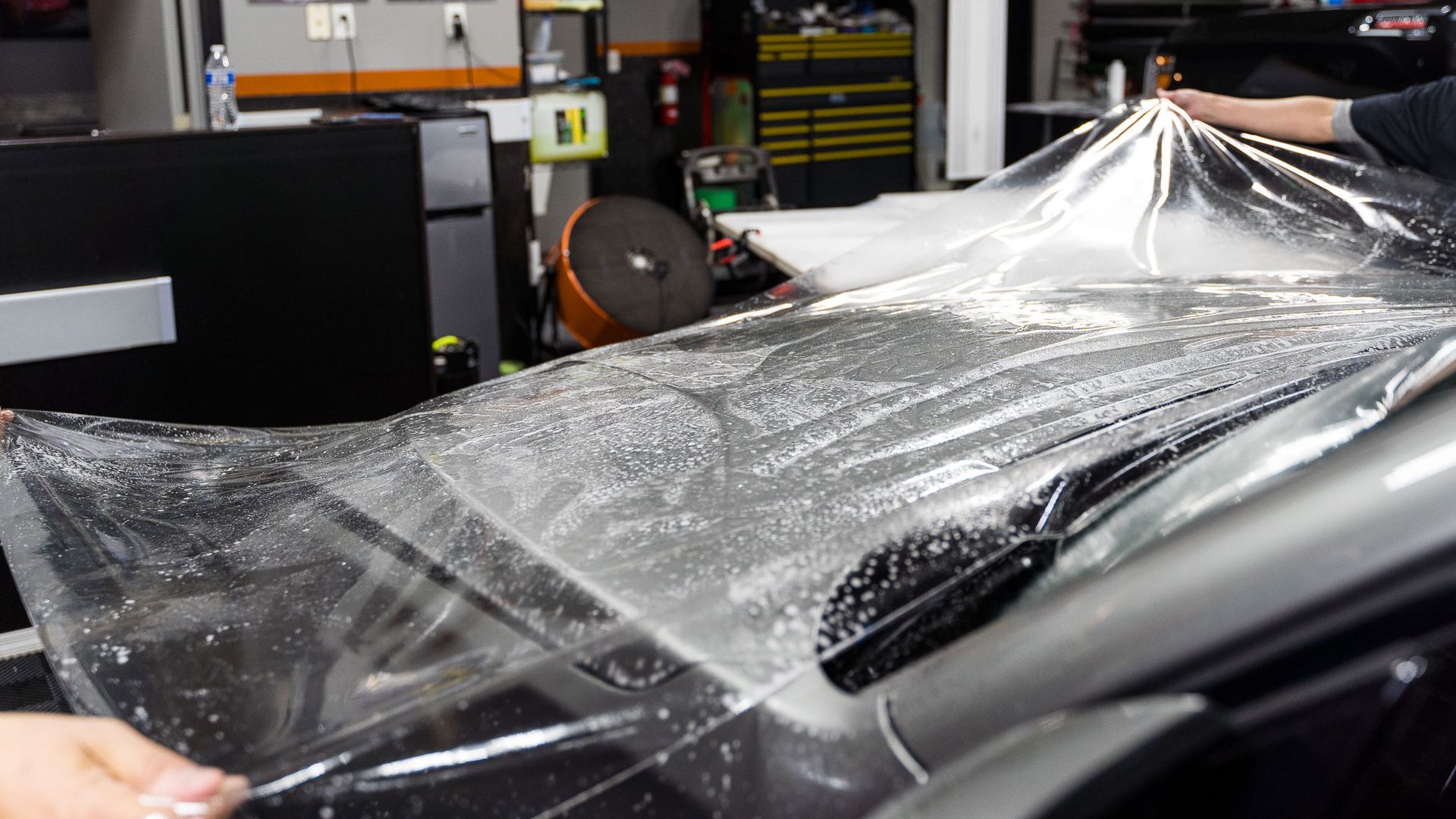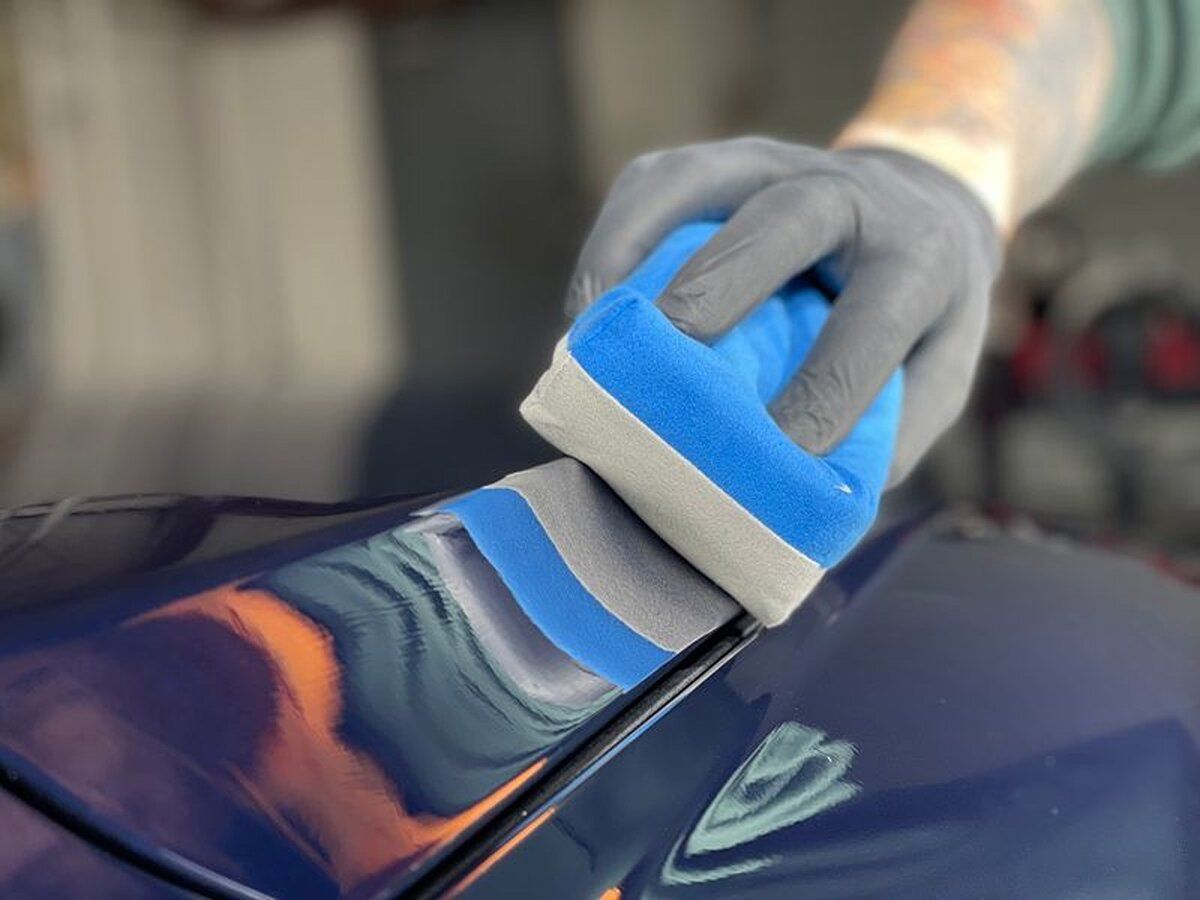Understanding the Hydrophobic Properties of Ceramic Coating for Water Repellent Vehicle Protection
GET A QUOTECALL (770) 722-3486
Ceramic coatings are superheroes that shield your vehicle from water. They contain magical bonds, making surfaces ultra-smooth so water just slides right off, much like how a sled glides down a snowy hill. Unlike regular surfaces that let water stick around, causing spots and stains, ceramic coatings wear a cloak of invisibility against water. Imagine a world where your car stays clean even after a heavy rainstorm.
Ceramic coating is known for its hydrophobic properties due to its molecular structure, which creates a protective layer that repels water and contaminants. This reduces water spotting, makes cleaning easier, and provides long-lasting protection for the vehicle's surface.
The Science Behind Hydrophobic Ceramic Coatings
Imagine a protective shield so sleek and smooth that water simply glides off it. That's the magic of hydrophobic ceramic coatings. These coatings are made using nanotechnology, which deals with extremely small things, like atoms and molecules. By engineering materials at this tiny scale, scientists have crafted a protective layer with some pretty amazing water-repellent powers. The secret to its water-repellent nature lies in the molecular structure of the coating. Silicon dioxide (SiO2) and titanium dioxide (TiO2), among others, arrange themselves in such a way that silicon-oxygen-silicon bonds dominate the surface. This particular arrangement creates an incredibly smooth surface—so smooth that water droplets are unable to grip onto it. In fact, these droplets avoid contact with the surface entirely due to its sheer sleekness.
This nifty property helps prevent those frustrating water spots and mineral deposits from forming on your car's surface. Additionally, it acts as a barrier, protecting your vehicle against potential damage caused by prolonged exposure to water. With this shield in place, you can say goodbye to worrying about rain wreaking havoc on the exterior of your vehicle. So, essentially, hydrophobic ceramic coatings act as a safeguard, keeping your vehicle's surface free from unsightly damage. On a rainy day, imagine that your car has a layer of hydrophobic coating that causes raindrops to bead up and easily roll off the surface. This can lead to water spots and stains as the water evaporates and leaves behind impurities.
Understanding this contrast helps us appreciate the benefits of hydrophobic surfaces, especially in applications such as vehicle protection. On a rainy day, imagine that your car has a layer of hydrophobic coating that causes raindrops to bead up and easily roll off the surface. This not only keeps your vehicle looking clean but also reduces the chance of water-related damage over time. To put it in simpler terms, think of hydrophobic surfaces as Teflon pans where food glides smoothly without sticking, while non-hydrophobic surfaces behave more like a regular, untreated pan where food tends to stick and leave residue behind.
Understanding this distinction is crucial when considering the benefits of hydrophobic ceramic coatings for vehicles. These coatings provide a layer of protection that minimizes the potential for water-related damage and keeps vehicles looking cleaner for longer periods of time. So if your goal is to keep your car looking pristine while protecting it from environmental elements, opting for a hydrophobic ceramic coating can save you from dealing with unsightly watermarks or stains caused by water lingering on non-treated surfaces.
Benefits and Uses of Hydrophobic Ceramic Coatings for Vehicles
Imagine this: You've just driven your car through a spree of rain and mud, but as soon as you stop, the water sheets off your vehicle's surface, taking all the grime with it. That's the magic of a hydrophobic ceramic coating at work. These coatings are designed to repel water and dirt, making them a rising star in the world of vehicle protection. But what makes them so special?
Water Beading and Self-Cleaning
Hydrophobic ceramic coatings create an invisible shield that causes water to bead up and roll off the car's surface. As the water beads up, it picks up dirt and other grime, effectively carrying it along with it as it rolls off. This results in a self-cleaning effect that makes it incredibly easier to clean your vehicle. Moreover, this self-cleaning action means less time spent scrubbing away stubborn marks, leaving you with a clean and pristine-looking car. Imagine spending less time at the car wash and more time enjoying the ride—that's what a hydrophobic coating can offer.
Enhanced Protection
Not only do hydrophobic coatings make cleaning a breeze, but they also provide an added layer of protection for your vehicle. The hydrophobic layer acts as a shield against environmental contaminants such as bird droppings, tree sap, and bug splatter, helping to prevent them from etching into the paintwork. In addition to protecting your car from these elements, the ceramic coating can also stop chemical etching from exposure to acidic substances like bird droppings or tree sap, protecting the paint and overall exterior of your car.
Improved Aesthetics
Beyond protection, hydrophobic coatings contribute to a lasting glossy finish that enhances the overall appearance of your vehicle. The self-cleaning effect perpetuated by these coatings not only keeps your car looking pristine but also ensures that it maintains its shine for longer periods of time. Moreover, with regular application of hydrophobic coatings, you'll be able to maintain that newly-waxed look for an extended period of time. This means no more frequent waxing sessions to keep your vehicle looking its best.
With their exceptional water-repelling properties and added protective benefits, it's clear that hydrophobic ceramic coatings are paving the way for an easier and more effective method of protecting your vehicle's exterior.
Costs and Considerations for Vehicle Protection
When it comes to safeguarding your vehicle with a hydrophobic ceramic coating, several crucial factors demand consideration before reaching a verdict.
- Professional Application Costs: The cost of professional ceramic coating application for your vehicle can greatly fluctuate based on various factors. Generally, it ranges from a few hundred to over a thousand dollars, contingent on the type of coating and the vehicle's size. Larger vehicles usually necessitate more materials and labor, leading to higher costs. Researching and obtaining quotes from reputable sources is vital to ensuring the best value for your investment.
- Lifespan and Maintenance: An essential factor in investing in ceramic coating is its lifespan and maintenance requirements. While known for its durability, understanding the coating's longevity and required maintenance is crucial. Professional-grade ceramic coatings might last 2–5 years with proper care. Regular washing, detailing, and occasional maintenance treatments are vital to maximizing its lifespan and effectiveness.
- DIY Options: For those seeking cost-effective alternatives, DIY ceramic coating products are available, offering lower upfront costs compared to professional applications. However, meticulous preparation and application are essential. Unlike professional applications, where experienced technicians handle the process, DIY applications put the responsibility on the vehicle owner. Thoroughly researching the product, following instructions diligently, and investing time and effort are necessary for achieving professional-level results.
The costs and considerations associated with ceramic coatings underscore the importance of informed decision-making when it comes to protecting your vehicle. Each option presents its own set of benefits and trade-offs, ultimately influencing the long-term protection and appearance of your vehicle.
Best Practices for Applying Ceramic Coatings
Applying ceramic coatings to your vehicle requires attention to detail and adherence to specific techniques to ensure maximum effectiveness. Let's walk through the essential steps and practices for a successful application process, from surface preparation to aftercare.
Surface Preparation
Before applying the ceramic coating, the vehicle's surface must be thoroughly prepared to ensure optimal adhesion and performance. Here are the key steps:
- Washing and Decontamination: Initiate by washing the vehicle's surface with a high-quality car shampoo to eliminate dirt, grease, and other contaminants. After washing, use a clay bar treatment to eradicate embedded particles that regular washing can't tackle.
- Polishing: If visible scratches or swirl marks are present on the vehicle's paint, consider using a polishing compound to address these imperfections before applying the ceramic coating.
- Solvent Wipe-down: After washing, decontaminating, and polishing (if necessary), use a solvent-based cleaner or isopropyl alcohol to wipe down the entire surface.
Application Techniques
Proper application techniques are crucial for achieving the desired protective and hydrophobic effects of ceramic coatings. Here's what you need to know:
- Following Manufacturer's Instructions: Each ceramic coating product comes with specific application instructions from the manufacturer. It's crucial to carefully read and follow these instructions for optimal results.
- Application Tools: Use high-quality applicator pads or microfiber towels designed for ceramic coatings to ensure even distribution of the coating while minimizing streaks or uneven coverage.
- Working in Controlled Conditions: Apply the ceramic coating in a clean, well-lit environment with controlled temperature and humidity levels for best results.
Aftercare
Proper aftercare is essential for preserving the hydrophobic properties and overall performance of the ceramic coating over time. Here are key aftercare practices:
- Use pH-Neutral Soaps: Use pH-neutral car soaps that are gentle on the coating while effectively removing dirt and contaminants when washing your coated vehicle.
- Avoid Abrasive Cleaning Methods: Refrain from using abrasive sponges, brushes, or harsh chemicals when cleaning your coated vehicle.
- Regular Maintenance: Schedule periodic maintenance washes to keep your vehicle's coated surface clean and free of debris.
By following these best practices in surface preparation, application techniques, and aftercare, you can maximize the benefits of ceramic coatings for your vehicle's protection and appearance. These steps contribute to prolonging the lifespan of the coating and ensuring long-lasting water-repellent properties.
Top-Rated Ceramic Coating Specialists in Marietta, GA
Enhance your vehicle's durability and shine with LeJeune Ceramic Coating & Paint Protection, the
premier ceramic coating specialists in Marietta, GA. Our advanced ceramic coating solutions offer unmatched protection against environmental hazards, UV rays, and everyday wear and tear, ensuring your car remains in showroom condition. Rely on our expert team for meticulous application and long-lasting results that highlight your vehicle's beauty and value. Don’t wait—secure the ultimate defense for your car’s finish with LeJeune Ceramic Coating & Paint Protection. Call us at
(770) 722-3486 today to experience superior service and unmatched quality!
